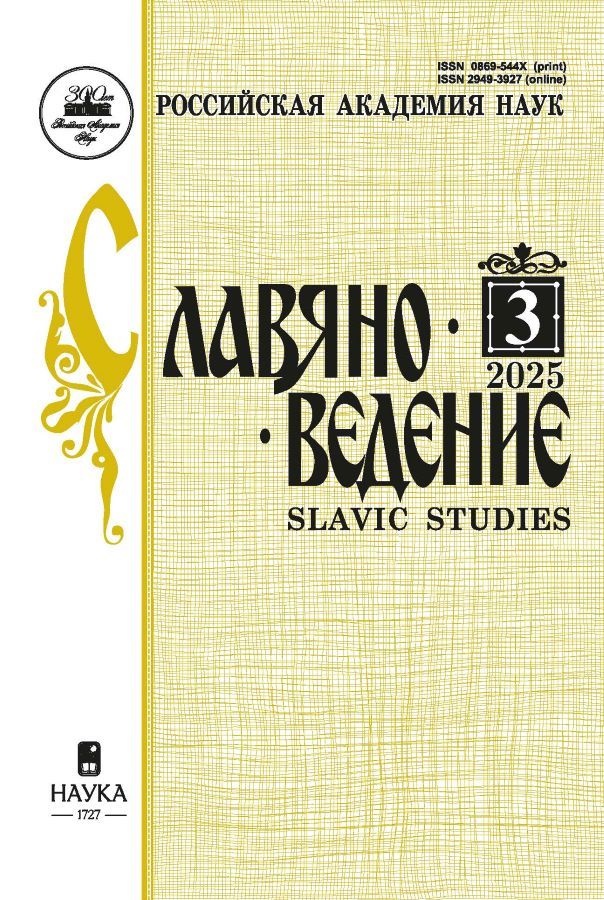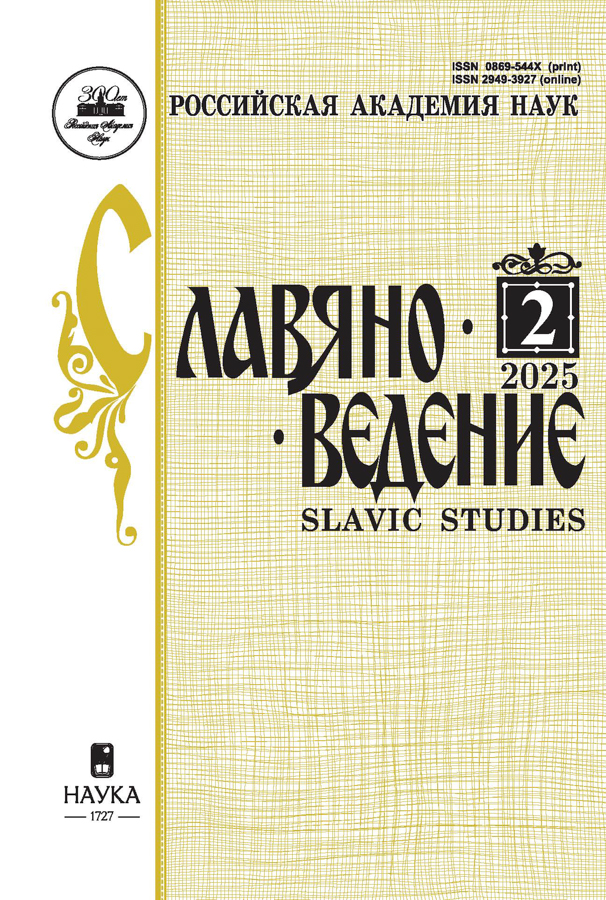Карта «Мотив макового зерна у восточных славян»
- Авторы: Березович Е.Л.1
-
Учреждения:
- Уральский федеральный университет им. первого Президента России Б.Н. Ельцина
- Выпуск: № 2 (2025)
- Страницы: 99-110
- Раздел: К юбилею Ирины Александровны Седаковой
- URL: https://ruspoj.com/0869-544X/article/view/680826
- DOI: https://doi.org/10.31857/S0869544X25020093
- EDN: https://elibrary.ru/IYIMRS
- ID: 680826
Цитировать
Полный текст
Аннотация
В статье рассматриваются три мифонима, которые представлены в говорах севера и востока Костромской области, – казúм, кажимóт, ве(и)дéнье. Эти слова впервые вводятся в лингвистический оборот, поскольку они не зафиксированы основными диалектными словарями русского языка и записаны преимущественно в полевых условиях. Мифонимы имеют перекликающиеся наборы признаков, что помогает осуществить семантико-мотивационную реконструкцию лексем и этимологизацию «темного» слова казим. В основе мифонима веденье лежит календарный признак (персонаж наказывает за недостаточное количество напряденного к Веденью, 4 декабря по н. ст.); в слове кажимот отражена формула Кажи моты, призванная контролировать объем напряденного; лексема казим образована от глагола казить ‘чудиться, казаться; портить; шалить’ и реализует скорее всего перцептивный признак «кажимости» персонажа, который лежит и в основе народноэтимологической реинтерпретации слова виденье.
Ключевые слова
Полный текст
Об авторах
Елена Львовна Березович
Уральский федеральный университет им. первого Президента России Б.Н. Ельцина
Автор, ответственный за переписку.
Email: berezovich@yandex.ru
ORCID iD: 0000-0002-1688-2808
доктор филологических наук, член-корреспондент РАН, профессор, зав. кафедрой
Россия, ЕкатеринбургСписок литературы
- Агапкина Т.А. Этнографические связи календарных песен. Встреча весны в обрядах и фольклоре восточных славян. М.: Индрик, 2000. 336 с.
- Белетич М., Лома А. Сон, смерть, судьба (наблюдения над праслав. *mora, *mara) // Slavica Svetlanica. Язык и картина мира: К юбилею С.М. Толстой. М.: Индрик, 2013. С. 56–75.
- Березович Е.Л. Поймать остродыма: об одной лексической загадке русских народных говоров // Русский язык в научном освещении. 2015. № 1 (29). С. 151–170.
- Логика трансформаций: региональная и локальная специфика̘ культурных и языковых процессов / отв. ред. И.А. Морозов, И.С.̘ Слепцова; Авторы: И.А. Морозов, И.С.̘ Слепцова, Е.А. Самоделова, П.С.̘ Куприянов, Е.Г. Чеснокова. М.:̘ Индрик, 2019.
- Моисеева С.А. Традиционный обрядовый фольклор русских горнозаводских сел Башкирии: Дис. … канд. филол. наук / Магнитогорский гос. ун-т. Магнитогорск, 2006.
- Народная демонология Полесья: Публ. текстов в записях 80–90-х гг. XX века. М.: Издательский Дом ЯСК, 2016. Т. 3. Мифологизация природных явлений и человеческих состояний / сост. Л.Н. Виноградова, Е.Е. Левкиевская.
- Рожкова Т.И. Некоторые аспекты изучения традиционной культуры русских Южноуральского региона // Русский фольклор. 2004. С. 265–281.
- Седакова И.А. Страдания св. Недели в народных балладах болгар и македонцев: этнолингвистика и фольклорная поэтика // Етнолингвистичка проучавања српског и других словенских jезика: У част академика Светлане Толстоj / ур. П. Пипер, Љ. Раденковић. Београд: САНУ, 2008. С. 375–384.
- Толстая С.М. Актантная структура глагола и семантика отглагольных имен: «субъектные» и «объектные» имена // Язык. Личность. Текст. Сборник статей к 70-летию Т.М. Николаевой / отв. ред. В.Н. Топоров. М., 2005а. С. 162–168.
- ТПЮУ – Традиционные праздники русского населения Южного Урала (Челябинская и Оренбургская области): материалы полевых исследований / [сост. О.Г. Баранова и др.; науч. ред. И.И. Шангина]. Челябинск: Изд-во Челяб. гос. ун-т, 2012. 303 с.
- Тульцева Л.А. Рязанский месяцеслов. Круглый год праздников, обрядов, обычаев и поверий рязанских крестьян. Рязань: Рязанский областной научно-методический центр народного творчества, 2001. [Рязанский этнографический вестник. № 30].
- Филиппова И.А. О некоторых мифопоэтических доминантах весеннего календаря казачьих поселений юга Челябинской области // Проблемы истории, филологии и культуры. Москва – Магнитогорск – Новосибирск, 2009. № 1 (23). С. 457–464.
Дополнительные файлы











